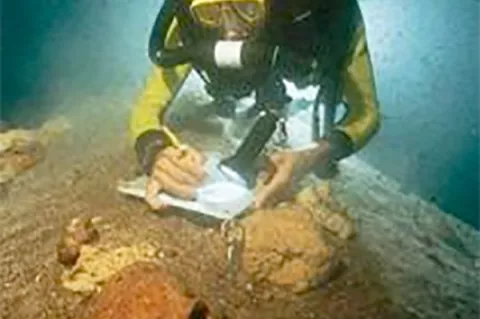Sub Sea Research to recover WWII freighter laden with precious metals
Sea Hunters, L.P., a division of the Portland Maine based shipwreck research and recovery company Sub Sea Research, embark to recover of one of the world's wealthiest wrecks.
Update
It was reported that the wreck of the Port Nicholson was discovered in 2008 by Greg Brooks, of the American company Sub Sea Research, but the discovery was kept secret until February 2012.
Brooks initially claimed to be investigating an unidentified vessel, codenamed Blue Baron, that lay off the coast of Guyana in South America.





